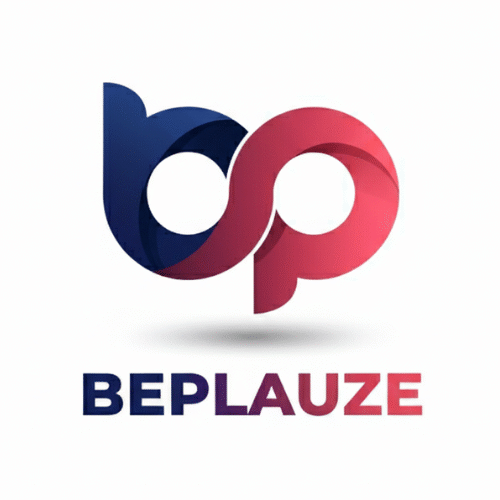Imagine scrolling through your feed and seeing a creator you love finally hit a major goal—going full-time, upgrading their setup, all thanks to a wave of dedicated fan support. This digital ecosystem, where admiration is directly converted into sustenance, has a name: Welcome to SimpCity.
It’s a term that’s exploded from meme culture into a genuine economic model. But what exactly is this metropolis of modern fandom? Is it a positive evolution of fan culture, fostering direct support for artists, or a complex recipe for unhealthy dynamics? Let’s take a walk through its neon-lit streets and find out.
To understand SimpCity, you first have to understand its most controversial citizen: the “simp.” The word isn’t new. It’s a shortening of “simpleton,” but its modern usage was popularized in early 2000s hip-hop and internet culture as a derogatory term. It was hurled at someone, typically a man, seen as foolishly devoted or overly attentive to a woman, often without receiving anything in return.
However, a fascinating shift occurred, especially on platforms like Twitch and TikTok. The term was meme-ified and reclaimed. What was once an insult began to be worn as a semi-ironic badge of honor. To “simp” for a creator meant you were their biggest supporter, their most dedicated fan. It signaled that you were willing to put your money where your admiration was.
This evolution mirrors the reclamation of words like “geek” or “nerd.” These terms started as negatives but were embraced by communities, transforming them into proud identifiers. Similarly, within the walls of SimpCity, “simping” has been reframed from an act of foolishness to one of direct, impactful support.
So, how does this city actually work? At its core, SimpCity is built on a simple transaction: fans provide financial support, and creators provide content, community, and a sense of connection. This economy runs on specific platforms, each with its own currency.
Here’s a quick map of the main commercial districts:
| Platform | Mechanism | SimpCity Manifestation |
|---|---|---|
| Twitch | Bits, Subscriptions, Donations | A fan “simps” by being the top cheerer in a stream or gifting 100 subscriptions to other viewers, earning public recognition and status. |
| OnlyFans/Fansly | Monthly Subscriptions, PPV Messages, Tips | Support is direct and financial, often for exclusive content. The “simp” dynamic is central, providing the creator’s primary income. |
| YouTube | Super Chats, Channel Memberships | A fan pays to have their message highlighted during a live stream, essentially paying for the creator’s and audience’s attention. |
| Patreon/Ko-fi | Tiered Subscriptions, One-time Donations | This functions like a patronage club, where fans get exclusive updates or content for their monthly support. |
Status is the key social currency in SimpCity. A top donor might get a special badge, their name shouted out on stream, or a dedicated thank-you message. This public acknowledgment reinforces the behavior, encouraging continued support and strengthening the community ties.
If money is the currency, then parasocial relationships are the infrastructure that holds SimpCity together. A parasocial relationship is a one-sided connection where a fan feels an intimate, personal bond with a creator, even though the creator doesn’t know them personally.
Creators are master architects of these feelings. They build them through constant, direct communication—reading super chats aloud, responding to comments, and sharing personal stories. This creates a powerful illusion of friendship and mutual investment. Platforms like Patreon excel at this by fostering a sense of an exclusive “inner circle.”
For example, a streamer like Pokimane might remember a regular subscriber’s name and chat with them directly, making that fan feel uniquely seen. This isn’t deceptive; it’s a fundamental part of the business model. In SimpCity, the product isn’t just the content—it’s the feeling of connection.
With such intense dynamics, every resident of SimpCity needs to understand the “zoning laws”—the healthy boundaries that keep the ecosystem from collapsing.
For Creators:
The pressure to maintain these relationships can lead to serious burnout. The line between public persona and private life can blur dangerously. Successful creators establish clear boundaries: setting a consistent streaming schedule, taking regular days off, and hiring moderators to manage their communities. They understand that their well-being is essential for a sustainable career.
For Fans:
Self-awareness is crucial. It’s important to view financial support as paying for entertainment, not buying a personal relationship. Setting a monthly budget for subscriptions and donations prevents financial strain. A healthy approach is similar to being a patron of the arts during the Renaissance. You support the artist and feel connected to their work, but you don’t expect to move into their studio.
We can’t talk about SimpCity without acknowledging its potential dark side. When boundaries break down, the dynamics can turn toxic. Fans may develop unhealthy obsessions, leading to stalking or harassment when they feel entitled to a creator’s time and attention. Conversely, some creators might unethically exploit their audience’s loyalty for maximum financial gain, fostering dependency. Recognizing these risks is the first step in preventing them.
Is SimpCity just a digital fad, or is it here to stay? The model shows strong signs of permanence because it fits into the larger “passion economy,” where people monetize their skills, personalities, and creativity directly. However, the metropolis will evolve.
Platforms will change their monetization rules, creators will innovate new ways to connect, and fan culture will shift. The biggest threat is widespread creator burnout. The long-term health of SimpCity depends on a cultural shift towards sustainability, where both fans and creators prioritize mutual respect and well-being over constant, exhausting engagement.
So, what’s the takeaway from our tour? SimpCity is a complex, powerful force in the modern internet landscape.
- For Fans: Support creators you genuinely enjoy, but always set a monthly budget. Engage positively in communities and remember that your value isn’t measured by your donations.
- For Aspiring Creators: Focus on building authentic connections, not just extracting value. Establish your boundaries early to protect your mental health and ensure a long career.
- For Everyone: Be a critical consumer. Understanding the economic and psychological structures behind the content you love allows you to participate more consciously and healthily.
The evolution of SimpCity reflects a broader change in how we value culture and connection online. It’s a place of immense opportunity, but it requires everyone to be mindful residents.
What’s your take on the SimpCity model? Have you seen examples of it done really well? Share your thoughts in the comments below.
You May Also Read: Ceıvır: The Art of Turning and Translating Worlds
Is being a “simp” a bad thing?
Not necessarily. The term has evolved. While it originated as an insult for someone seen as overly subservient, in the context of the creator economy, it often describes a dedicated fan who financially supports creators they believe in. The key is the health and intentionality behind the support.
What’s the difference between a simp and a patron?
Semantics and context. “Patron” has a traditional, high-art connotation (e.g., supporting a Renaissance painter). “Simp” is a modern, internet-born term, often used with a hint of irony within meme culture. The underlying action—financially supporting a creator—can be very similar.
How can creators avoid burnout in the SimpCity economy?
Creators can protect themselves by: setting a strict work schedule, taking regular days off completely disconnected from platforms, hiring community moderators, and consciously separating their online persona from their private identity. Prioritizing mental health is non-negotiable.
Are parasocial relationships unhealthy?
They exist on a spectrum. Light parasocial relationships can provide a genuine sense of community and belonging. They become unhealthy when they replace real-world social interactions or lead to obsessive thoughts, financial strain, or entitled behavior toward the creator.
Which platforms are most associated with SimpCity dynamics?
The most prominent platforms are Twitch (subscriptions, bits), OnlyFans/Fansly (direct subscriptions and tips), YouTube (Super Chats, memberships), TikTok (gifting), and Patreon (tiered subscriptions).
Can SimpCity dynamics exist outside of streaming and adult content?
Absolutely. The model applies anywhere fans directly support creators. This includes writers on Substack, artists on Ko-fi, musicians on Bandcamp, and even educational content creators. Anywhere a community forms around a creator’s work, you can find elements of SimpCity.

